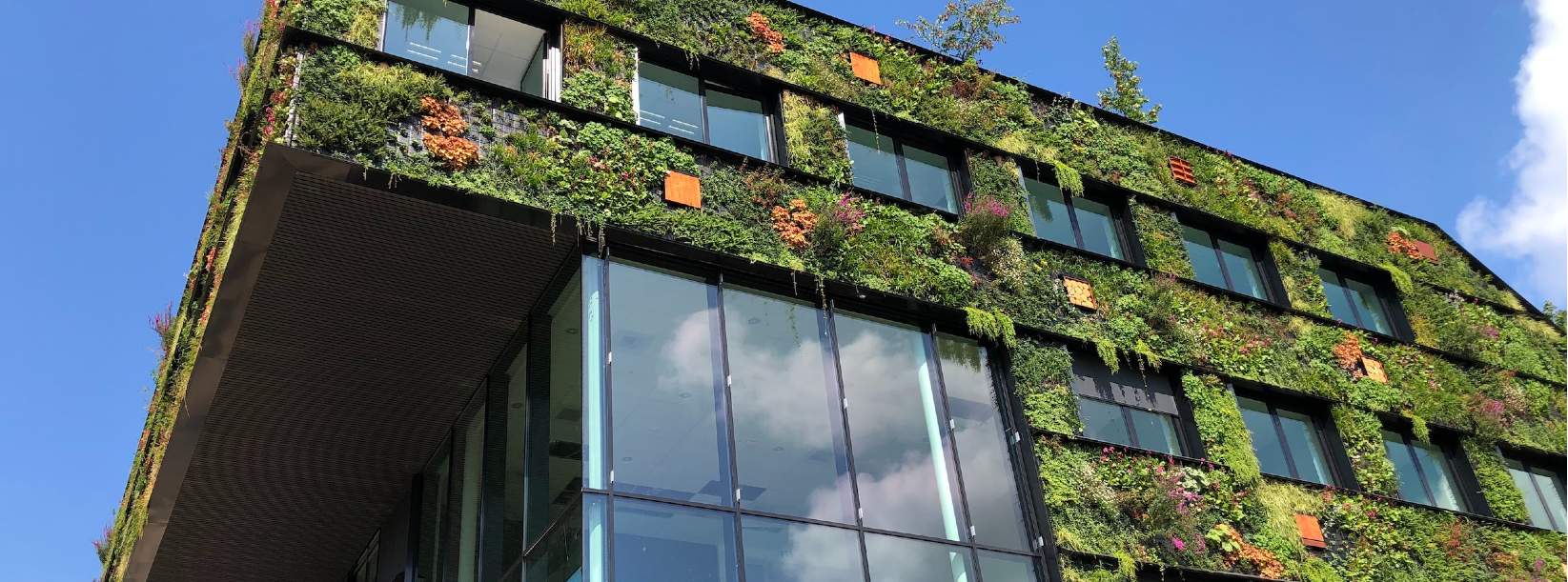Biodiversity is declining globally at rates unprecedented in human history. COP15, the United Nation’s Biodiversity Conference in Canada in December, set out an ambitious plan of broad-based action to halt biodiversity loss by 2030. This will be supported by increasing legal requirements such as the Biodiversity Net Gain legislation. To promote a holistic sustainability agenda, there needs to be a reframing of the relationship between nature and the built environment.
The Covid-19 pandemic shifted global priorities and has positioned social sustainability in the centre of resiliency discussions. It created a growing need to reconceptualise the workplace and has emphasised the role of biodiversity in promoting healthier workspaces. In addition to the well-documented environmental benefits, urban greenery, such as living walls and green roofs creates social value. It underpins a range of specific ecosystem functions known to contribute to human health and mental wellbeing.
For example, vegetation is able to improve air quality inside an office through the deposition and trapping of pollutants on plant surfaces. Incorporating nature within a building has been found to increase worker productivity by more than 15 per cent as well as reduce staff sick leave. In addition, biodiversity is able to facilitate social interactions and promote social cohesion which contributes to happier and healthier communities. This is highlighted by the collaboration between the World Health Organisation and the UN Convention of Biological Diversity in order to raise awareness of the intimate connections between nature and wellbeing.
Demand has notably increased for properties that incorporate greenery. According to the Better Buildings Partnership, managing biodiversity is a crucial element of responsible property management. A biodiversity baseline assessment, for example, involves conducting an ecological survey to identify species and habitat that are present in a particular location. This can provide property managers with information on how to mitigate biodiversity risk, responsibly manage a site, and assist with developing a biodiversity action plan to ensure nature is considered in the decision-making process. Such an action plan requires the collaboration between multiple stakeholders and promotes the installation of green infrastructure.
Multiple properties have started implementing biodiversity initiatives which have contributed towards community engagement and wellbeing. Chelsea and Westminster Hospital, for example, has unveiled an indoor botanical sky garden which aims to support the cognitive function, wellbeing and rehabilitation of patients in intensive care. King’s Cross has installed more than 200 metres of green walls and living roofs on estate properties since 2012. This has facilitated community engagement through nature walks and wellness events centred around its green spaces. Similarly, Canary Wharf has transformed its corporate exterior with over 12,000 plants forming an expansive living wall display. This is part of a wider biodiversity plan to enrich the public realm and contribute to Canary Wharf’s goal of enhancing the wellbeing of people that live and work in the area. Biodiversity is being used to reinvent the financial district as a place to work post-pandemic.
As 68 per cent of the world’s population is expected to live in urban areas by 2050, buildings will continue to play an increasingly important role in shaping sustainable communities and lifestyles. Promoting biodiversity within property management will not only help mitigate the built environment’s contribution to 30 per cent of global biodiversity loss, but it will assist with promoting wellbeing. While sustainability agendas have focused on decarbonisation, biodiversity is equally paramount.
Further information
The role of high-quality real estate data in an ESG strategy

.jpg)
.jpg)

